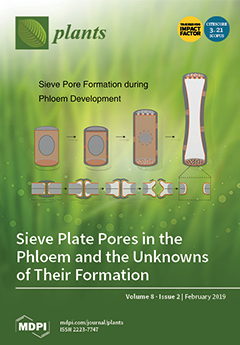Glycoside Hydrolase 3 (
GH3), a member of the Auxin-responsive gene family, is involved in plant growth, the plant developmental process, and various stress responses. The
GH3 gene family has been well-studied in
Arabidopsis thaliana and
Zea mays. However, the evolution of the
GH3 gene family in
Oryza species remains unknown and the function of the
GH3 gene family in
Oryza sativa is not well-documented. Here, a systematic analysis was performed in six
Oryza species/subspecies, including four wild rice species and two cultivated rice subspecies. A total of 13, 13, 13, 13, 12, and 12 members were identified in
O. sativa ssp.
japonica,
O. sativa ssp.
indica,
Oryza rufipogon,
Oryza nivara,
Oryza punctata, and
Oryza glumaepatula, respectively. Gene duplication events, structural features, conserved motifs, a phylogenetic analysis, chromosome locations, and Ka/Ks ratios of this important family were found to be strictly conservative across these six
Oryza species/subspecies, suggesting that the expansion of the
GH3 gene family in
Oryza species might be attributed to duplication events, and this expansion could occur in the common ancestor of
Oryza species, even in common ancestor of rice tribe (
Oryzeae) (23.07~31.01 Mya). The RNA-seq results of different tissues displayed that
OsGH3 genes had significantly different expression profiles. Remarkably, the qRT-PCR result after NaCl treatment indicated that the majority of
OsGH3 genes play important roles in salinity stress, especially
OsGH3-2 and
OsGH3-8. This study provides important insights into the evolution of the
GH3 gene family in
Oryza species and will assist with further investigation of
OsGH3 genes’ functions under salinity stress.
Full article






